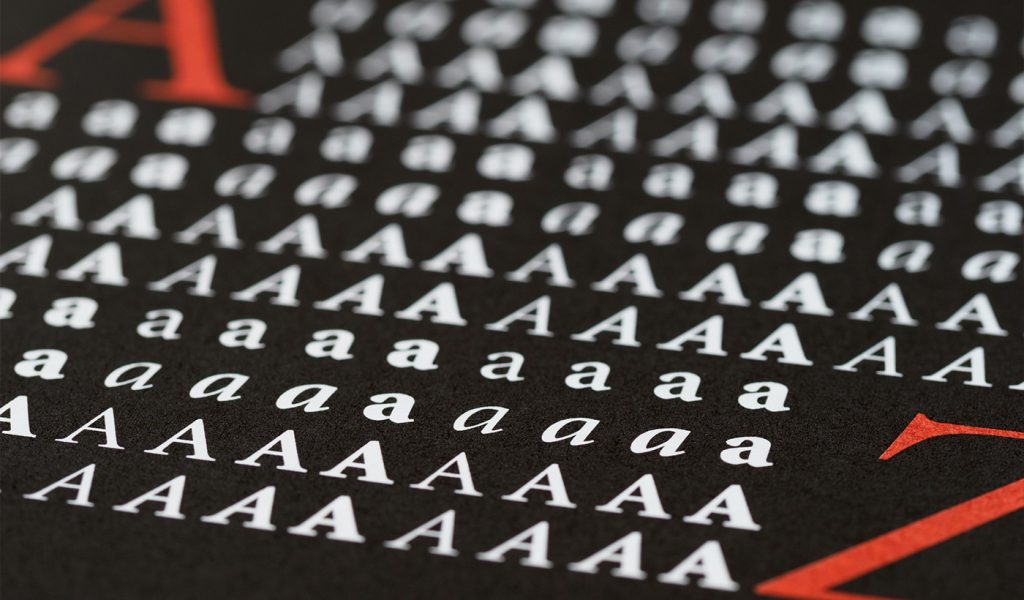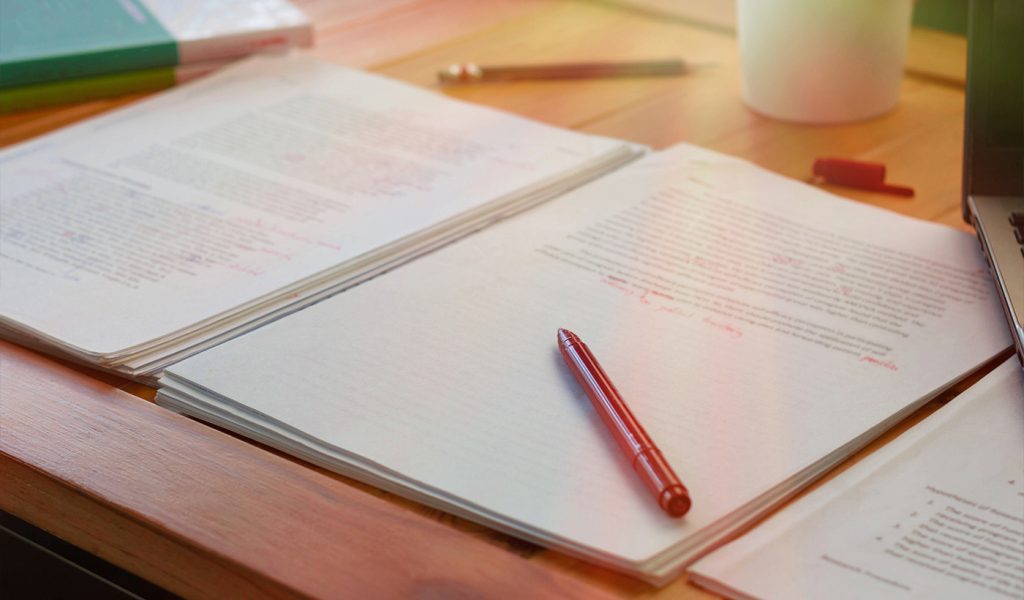How to print your book: a guide for self-publishers
As a creative pursuing self-publishing, you have taken a giant leap by finishing your book. The next crucial phase is bringing your creation to life through printing.
Book printing is a less glamorous yet universal process that applies to every physical copy in every genre. It doesn’t matter if you’re an aspiring children’s book author, a talented photographer, a creative comic book artist, or any independent writer; understanding the book printing process is crucial in determining the outcome and expense of your project.
We’re here to explore the essential steps to get your book printed and printed professionally. We’ll discuss the different printing options available to self-publishers, along with the pros and cons of each. We’ll demystify printing terminologies like paper type, binding options, ISBN, barcodes, and the proofing process.
Armed with this knowledge, you will have the confidence to navigate the printing process and ensure your book meets bestseller print standards. We also get that budget can be a significant concern, so we share strategies to help keep your printing costs manageable without skimping on quality.
Book printing options
Two primary options to consider when printing your self-published book are offset printing and print-on-demand (POD). Each method has its benefits and drawbacks. But in most cases, POD often works best for self-published creators, while offset printing can be more efficient for publishing houses working with established authors.
What is offset printing?
Offset printing is a traditional, cost-effective method suited for large print runs. It involves creating metal plates to transfer ink onto rubber blankets and, finally, onto the printing surface. This process is the industry standard for delivering high-quality results in large quantities. It’s ideal for creators with a substantial demand for their books.
Offset printing is cost-effective for large print runs and offers superior print quality, making it ideal for visually rich books. It allows for extensive customization, allowing you to choose from various paper types, finishes, and ink colors to match your vision. As the method used by traditional publishers, offset printing involves higher upfront costs due to plate creation and minimum print quantities. Managing inventory can also be challenging if demand is uncertain.
What is print-on-demand (POD)?
POD is a modern printing method that revolutionized self-publishing. With POD, you print books as you receive orders, eliminating large financial investments and tricky inventory management.
Print-on-demand reduces upfront costs as you only print books when orders come in, saving on storage and logistics. It also allows the flexibility to print single copies or small batches, making POD great for testing the market or niche audiences. However, the cost per unit may be higher than offset printing for larger quantities.
Finding a printing service
The next step is pinpointing a reliable printing service that meets your requirements and publishing standards. With such an array of digital book printers available, evaluating several factors when picking your service is wise.
- Services offered. Begin by assessing the services provided by different printing companies. As a rule, only work with providers that specialize in book printing. These providers generally have the experience, expertise, and technology tailored to your requirements.
- Printing quality. The quality of your book is super important, so thoroughly examine samples of their previous work. Request print samples or look for books they’ve printed to gauge the paper quality, binding, and overall finish. A professional printing service should showcase consistency and excellence.
- Customization options. Consider the level of customization each service can provide for your book. Ensure they offer a variety of paper choices, finishes, and binding options to actualize your creative vision. Look for the flexibility to create a unique and visually appealing book that aligns with your artistic direction.
- Turnaround time. Time is of the essence in publishing. Ask about each service’s production timeline and turnaround times. Be sure the company you choose can deliver within your desired timeframe without compromising quality.
- Pricing and quotes. Get detailed quotes from multiple printing services and carefully review their pricing structures. Compare the costs for different quantities and evaluate any additional fees or setup costs. Balance the overall cost to self-publish your book with the level of service and quality provided.
- Reputation and reviews. Research each printing service’s reputation. Seek customer reviews and testimonials to learn about the service’s reliability and communication and gauge past clients’ satisfaction.
- Distribution. Consider every printing service’s shipping options and distribution capabilities. Ensure they can handle the distribution of your book to various retailers—or directly to customers if you’d like.
- Proofing process. Verify every service’s proofing process to ensure you can review and approve a physical copy (proof copy) of your book before the full print run. Your review is crucial to catch any potential errors or layout issues before your book goes into production.
Working with the right printing partner can make a significant difference in delivering a beautiful, bookstore-quality product that exceeds your readers’ expectations and represents your work in the best possible light.

Essential elements that go into printing a book
You must check several boxes before submitting your work for printing. Preparing your manuscript, choosing your binding and paper type, and navigating printing costs are all necessary steps in turning your book into a tangible finished product. This section dives into the essential elements of printing a book, helping to ensure a frictionless journey across the final self-publishing line.
1. Manuscript: preparing for print
A critical step in pre-printing is ensuring your manuscript is properly prepared and formatted for production. Pay attention to your margins, font selection, page numbers, headers, and footers. Here’s how.
- Margins: Adequate margins ensure your text doesn’t get too close to the edge of the page, which prevents content from being cut off during printing and binding.
- Font selection: Choose a legible font that suits the genre and style of your book. If you publish an ebook, stick to standard fonts to ensure compatibility across different reading devices.
- Page numbers: Include page numbers consistently throughout your manuscript for seamless navigation.
- Headers and footers: Add headers with the book’s title and chapter names for easy reference.
While polishing your manuscript, consider investing in developmental editing services before getting into layout and print. A developmental editor will help you improve your book’s structure, content, and style before publication. Catching narrative inconsistencies and stylistic challenges early can pay dividends in the long run.
2. Professional editing and design
The quality and readability of your book’s content are pivotal to its success. While you can do a lot independently, recruiting support in this area makes sense for many self-published creators.
It’s no secret that it’s difficult to catch typos in your own writing. Psychologists call this generalization—the mind’s default mechanism to store information and understand meaning rather than technicality. So, hiring a professional editor is invaluable in ensuring your book is free from errors, typos, and grammatical mistakes. Undoubtedly, a well-edited book elevates your credibility as a self-publisher.
In addition to editing help for your copy, photos, and other content, consider a book designer. Investing in professional book design can elevate your book’s marketability and curb appeal. Designing a captivating book cover can distinguish your book on the shelves and capture potential readers. And an organized, aesthetically pleasing interior layout creates an enjoyable reading experience.
In short, don’t skimp on proper book editing and design. You put a lot of time, energy, and resources into creating your book. Maximize your investment by ensuring your book looks and reads like a future bestseller.
3. Paper and binding options
Your choice of paper and binding significantly impacts the look and feel of your final book. With visually oriented books, like photo books, opting for quality is key. But for literary novels with hundreds of pages, efficiency is more of a factor. When weighing these options, consider the following.
- Paper weight: Different paper weights affect the thickness and durability of your book. A heavier paper adds substance and longevity, while a lighter paper is better for portability and affordability.
- Paper color and finish: Paper color and finish contribute to the overall aesthetics of your book. Choose between white, cream, or colored paper, and test out matte or glossy finishes. If your printing service offers a proof or swatch kit, try printing your photo book on different paper so you can see how your images show up on each type.
- Binding options: There are many options, including perfect binding, spiral binding, and hardcover binding. Each has unique advantages, with perfect binding being cost-effective, spiral binding providing flexibility, and hardcover offering durability and a premium look.
Some printing services offer swatch kits, allowing you to experience different paper types and finishes before deciding. Spend time figuring out which materials work best with your book vision and budget.
4. Cover options: paperback versus hardcover
The front cover is your book’s first impression, so choosing the right type is vital. If you’re unsure which book option is best, let’s explore both in detail.
- Paperback: Paperback covers are flexible, lightweight, and cost-effective. They are perfect for novels, zines, and serialized books with frequent updates or revisions. However, they’re less durable than hardcovers.
- Hardcover: Hardcover books exude a premium feel and durability, making them ideal for special editions, coffee table books, and books with a longer shelf life. However, hardcovers are typically more expensive to produce.
Consider your book’s genre, target audience, and budget when choosing between a paperback and hardcover. Or, best yet, offer both and let your fans decide!

5. Typeface: choosing the right font
Selecting the right typeface is essential for the book’s cover and interior. Typography complements your book’s design, helps set the tone, and enhances readability. But choosing the right font is not always easy. Here’s what to think about when picking.
- Prioritize readability. Clear and legible fonts are integral to any book design. After all, what is a book’s point if a reader can’t make out the photos, captions, or text?
- Match the font to your book’s genre and tone. The right font can immediately create a cohesive and immersive reading experience.
- Maintain consistency. Avoid using too many fonts; limit your selection to two or three for a cohesive design.
- Experiment with font sizes and line spacing. Play around to strike the right balance between readability and aesthetics.
- Seek feedback. Gather opinions on the font’s readability and appeal from mentors and trusted advisors.
- Consider san-serif and serif. Sans-serif fonts are usually best for contemporary genres, while serif fonts are great for classic or historical genres.
Remember that simplicity and legibility often trump decorative or overly stylized fonts.
6. ISBN and barcode: the essentials for distribution
An International Standard Book Number (ISBN) is a unique identifier that distinguishes your book from others in the market. It is essential for sales, distribution, and libraries. You can obtain an ISBN from your country’s ISBN agency or through self-publishing platforms. Blurb issues ISBNs for free* with any book created using BookWright, our Adobe InDesign plugin, or our PDF to Book uploader tool.
Barcodes are also crucial for retail distribution. They encode the ISBN and facilitate accurate scanning at bookstores. Many printing services provide barcodes and ISBNs or offer guidance on obtaining them.
*Before you can set your book up for sale with Blurb and distribute through the Blurb Bookstore, Amazon, or Ingram Global Retail Network, you must first purchase a copy of it. Purchasing a physical copy will allow you to see and touch your book while also being able to check and correct errors before making it available for others to purchase.

7. Proofing: ensuring perfection
Before proceeding with the entire print run, request a physical proof copy of your book. Many printing services offer this option, which allows you to review your final product and catch any remaining errors, layout issues, or formatting glitches. A proof copy is a great way to comb through your book and ensure it’s ready before giving the green light to initiate a complete print run.
You may also want to get a second set of eyes and recruit the services of a professional proofreader or copy editor. Hiring a professional editor can be invaluable for several reasons:
- Unbiased evaluation: Professionals provide an impartial review, catching errors you might miss due to familiarity with the content.
- Language expertise: Editors enhance grammar, punctuation, and clarity, elevating readability and flow.
- Consistency and style: Editors ensure consistent spelling, capitalization, and punctuation, maintaining a cohesive writing style.
- Enhanced content: Editors can suggest revisions to strengthen the book’s content and message.
- Visual elements: Proofreaders verify accuracy in images, captions, and tables, ensuring correct placement and labeling.
- Catching last-minute errors: Professional editors find those last-minute mistakes that may have slipped through multiple self-edits.
- Saving time and effort: Hiring a professional frees up time for other aspects of publishing, helping you focus on what you do best.
8. Cost considerations
Printing costs are a significant aspect of self-publishing, and there’s much to be mindful of. Here’s where to start.
- Setup costs: Offset printing may involve upfront setup expenses, like creating printing plates or molds for your book. These costs are more significant for offset printing than print-on-demand, where setup fees are minimal or nonexistent.
- Per-copy costs: The per-unit cost of printing each book varies based on print quantity, trim size, paper type, and binding options. Bulk printing with offset may reduce the per-copy cost, making it cost-effective for higher print quantities.
- Shipping: If you’re distributing physical copies of your book, you must consider shipping costs. The printing facility’s location and the book’s destination influence shipping expenses.
- Additional charges: Depending on your requirements, there may be additional charges for services like rush printing, special finishes, or customizations.
To keep costs manageable without compromising quality, consider these cost-saving strategies.
- Print-on-demand is cost-efficient for creators with uncertain demand or those testing the market. It eliminates the need for significant upfront investments and inventory storage.
- Digital printing is more economical for short print runs, as it eliminates setup costs associated with offset printing.
- Opt for a standard trim size for your book to avoid additional trimming costs during production.
- Bulk printing with offset may be cost-effective due to reduced per-unit costs if you anticipate high demand.
- Invest in self-promotion and marketing to increase book sales—it takes money to make money, as they say.
By grasping all the costs involved in self-publishing and implementing relevant cost-saving strategies, you can effectively budget your book printing expenses accordingly and price your product with an adequate profit margin.
Print your book with Blurb
We’re Blurb, a print-on-demand service built by and for indie self-publishers. Our easy-to-use bookmaking software tools, array of customization options, and convenient print and distribution capabilities provide a cost-effective yet professional-quality solution.
With Blurb, only print what you need when you need it, saving on upfront costs and minimizing inventory risks. You can also leverage Blurb to help sell and distribute your book across popular channels, including Amazon.
Start your self-publishing journey and turn your work into the print version you envision.

